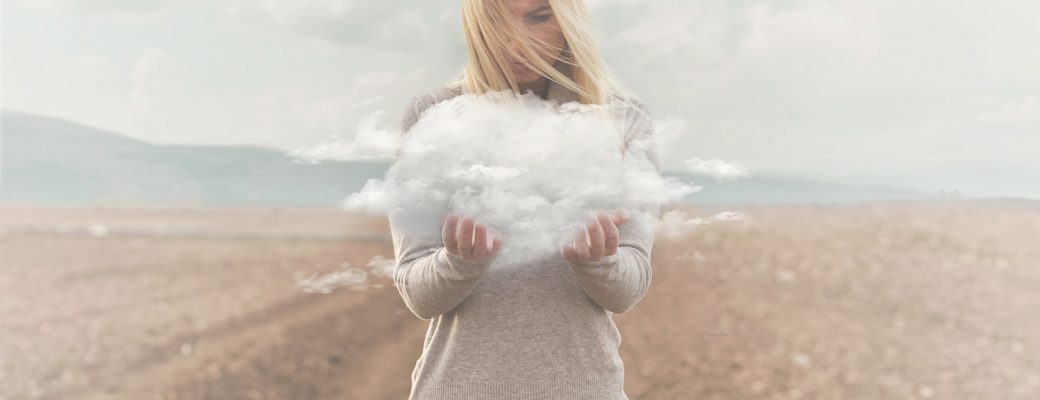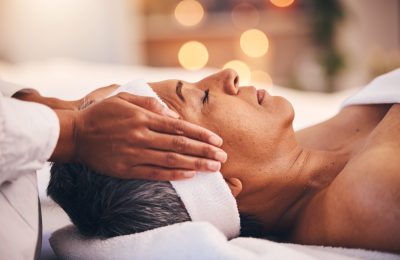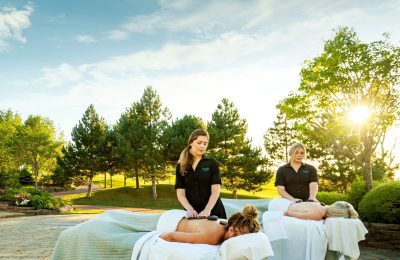Top Destination SpaSte. Anne’s SpaGrafton, Ontariowww.steannes.comAt Ste. Anne’s Spa, guests come to unwind and rejuvenate while leaving their stress and…
Awakening the Senses
To live, to breathe, to restore or just be – these are the unspoken promises embracing guests as they enter the serenity of today’s modern spas and wellness studios. Experts say that the secret to leading guests into this blissful state lies in the way that these facilities stimulate, or calm, the five senses.
In the spa and wellness industry, there’s a growing realization that mindful interior design can gently awaken each of the senses, in a way that leads to relaxation and a memorable signature experience. It’s a belief that drives Core Essence, a full-service wellness design and consulting firm, led by Jennifer Findlay and her sister, Kathryn.
The Canadian duo, designers of award-winning international luxury properties, was hired by Westcorp Development for a world-class hotel residence and spa in B.C.’s Okanagan Valley. In describing the waterfront project, currently under development on the scenic shores of Lake Okanagan, Findlay explains, “We try to take cues from the colour palettes there, from the sensory experiences of walking through those vineyards, and picking local fruits and berries, and their contrast with the adjacent majestic mountains.”
A yoga teacher and biofeedback practitioner, Findlay started her career in spa operations and management for the Fairmont Hotel and Resorts, and the Hilton and Starwood groups. “I was being called in to repair and rehabilitate existing spa businesses that were underperforming,” she recalls.
Findlay notes that good design is intended to ground the client in the present in a way that is not verbally communicated, but rather through physical prompts that awaken sensations. In her design direction, she uses elements that evoke responses on a “cellular level:” the aroma of crisp apples, fresh berries and ripe peaches, and the rich, vibrant textures of wood, stones, plants and herbs, accented by gentle lighting.
Anticipating and imagining the myriad of ways that different individuals will respond to such cues is key to the design process. “How are you really driving down into each of those individual senses?” Findlay explains that it begins with material choices, preferably locally sourced and renewable.
For the Kelowna property, the design team was inspired by natural cedar, Nordic white spruce and glacial clay, an approach that extended into the unique design of a Hammam at the property. Traditionally constructed of white polished marble, instead the team is using local granite, retaining the rock’s raw edge for the Hammam, as an element that pays tribute to the region’s natural beauty.
“You also have to think about lighting, which is probably one of the biggest ways we feel you can influence the senses,” Findlay explains. It goes beyond the task-oriented lighting needed for specific treatments and makes the most of controlled lighting (using dimmers and shaded windows, for example) that adjusts for individual preferences, while making the most of natural daylight. “It’s the idea of looking at how light impacts your circadian rhythm and your immune system. There’s research that says the colour quality – blue light versus yellow light versus red light – can also have an impact. There’s a level of lighting that allows you to harmonize with your environment, and that’s the most important thing because, as human beings, we are happiest and healthiest when we are living in harmony with our natural environment.”
Findlay adds that elements like lighting, as well as air quality, acoustics and thermal comfort have the ability to impact the built environment. “In creating spaces, we need to design them so they are free of any type of harmful chemicals, toxins, DOCs, the potential for off-gassing and other harmful particles.”
Acoustical design is critical when it comes to avoiding disruptive noises during treatments, but it goes beyond preventing the sound of slamming doors or a laundry bin wheeled past a therapy area. It involves a thoughtful approach with a purpose in mind, notes Findlay. “Plan your zone so that you anticipate how people will be using those spaces. Is this a zone of activity, of recovery, rest and treatment, or is there social programming that encourages small groups to socialize?
“Curating a true ‘sense of place’ is a guiding commitment. How is the facility connected to its location, the people and the culture? What does that feel like, and how is this awakened through sensory experiences? Draw inspiration and cues from the location and surrounding environment as much as possible.”
Sometimes less is more
On the picturesque east coast in Summerside, P.E.I., Melanie Dufour – owner of Glow Juicery and The Recovery Studio – says her clients arrive looking for an entirely different experience; they want an escape from all sensory input through the studio’s floatation tank.
“The majority of people coming to float are dealing with some anxiety or high stress,” notes Dufour, a former RCMP officer, who was introduced to the healing power of sensory deprivation tanks in her quest to recover from an intense emotional period while serving in Canada’s north.
Since leaving the police force, Dufour has shifted from combatting crime to fighting toxins in the body. When she opened her studio earlier this year, she invested in high-end, innovative technologies and programs for the purpose of helping to detoxify both the body and mind.
The facility’s I-SOPOD floatation tank eliminates all sensation of gravity, temperature, touch, sight and sound, which together account for 90 percent of normal neuromuscular activity. Floating takes the pressure of gravity off joints and muscles, and puts the body into a high state of physical relaxation. Blood pressure and oxygen intake have been shown to be reduced, while blood flow and the distribution of red blood cells increases.
The studio’s Cocoon Wellness Pro combines both dry heat and infrared heat with vibratory massage, aromatherapy and salt air to deliver a detoxifying experience and help maintain healthy levels of cortisol. “It detoxifies seven times more than a regular infrared light sauna,” notes Dufour. It’s often paired with binaural beat headphones to impact brain waves that lead to a meditative state.
Some clients – many dealing with anxiety – prefer the infrared light sauna blanket over the Cocoon. Dufour suspects it’s “just because of the feeling of being hugged.” She also invested in a Rapid Reboot Recovery System, which fits around limbs – much like a blood pressure cuff – to deliver pulses that mimic massage techniques, maximizing circulation. Often used by athletes, the technology compresses and relaxes muscles and connective tissue, improving blood flow and releasing lymphatic fluids.
On entering the studio, guests are met with the faint smell of essential oils. Dufour recently replaced fluorescents with softer, controlled lights. A fireplace adds to the ambiance and all the rooms are soundproofed. Soothing music plays in the background. For some guests, however, even this can be a bit much; “If a client has severe PTSD, I shut everything off for them because I don’t want to activate anything in their mind that can trigger an extreme emotion.”
Although Dufour temporarily closed her business at the height of the pandemic, she is optimistic about the future. “I’m a big believer that I have the perfect business post-COVID because people are going to want to be more focused on taking care of themselves, of what they’re putting in their body, whether that’s soothing sounds or better thoughts or food. People are going to be into self-care more than ever.”
Bota Bota spa-sur-l’eau the sound of silence
Floating dockside next to a grain silo in Montreal’s Old Port, a 70-year-old boat that once ferried passengers to communities along the St. Lawrence now houses a state-of-the-art, multi-sensory spa. Bota Bota spa-sur-l’eau is a “silent spa” where speaking is discouraged in designated areas, while other spaces allow for low-volume conversations. The absence of voices sets the tone for guests to fully immerse themselves and relax in the stunning surroundings. Five ship decks house a reception area, café, baths, saunas, massage rooms and spaces for simply relaxing, while an adjacent garden and pool area offer a water circuit (saunas, steam baths, cold baths) and several outdoor hot tubs.



